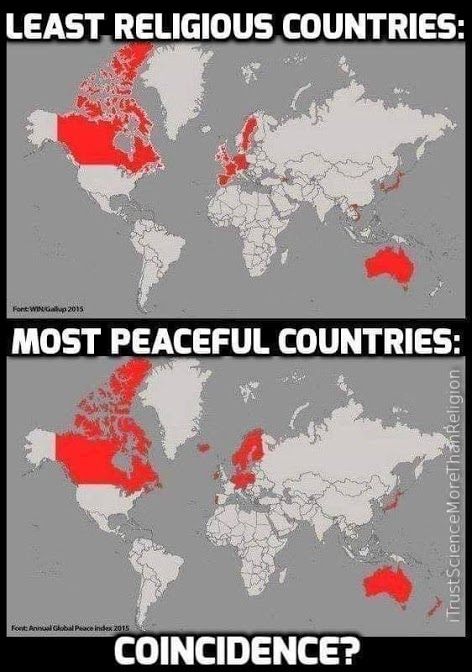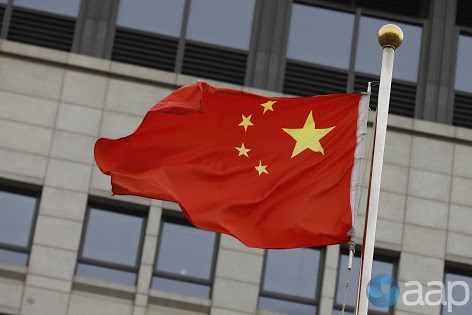The Statement
AAP FactCheck examined a Facebook post from October 14, 2018 by Science & Atheism, which features two images of the world map, one below the other.

The upper map is titled “LEAST RELIGIOUS COUNTRIES:” with the corresponding countries shaded in red. The lower map is titled “MOST PEACEFUL COUNTRIES:”, with corresponding countries also coloured red. At the bottom of the maps is written “COINCIDENCE?”, while along the right side of the lower map is written: “iTrustScienceMoreThanReligion.”
The attribution listed under the Least Religious Countries map reads “WIN/Gallup 2015”, while the attribution under the Most Peaceful Countries map reads “Annual Global Peace Index 2015”.
The post has been shared more than 2900 times and attracted more than 300 comments and 2400 reactions.
The Analysis
The attribution on the “Least Religious Countries” map appears to refer to a WIN/Gallup 2015 survey which examined the state of religion across the world. The survey of 65 countries was based on 63,898 interviews and asked respondents two questions in order to make an assessment from different points of view.
1- Irrespective of whether you attend a place of worship or not, would you say you are: a religious person, not a religious person or a convinced atheist?
2 – Does religion generally play a positive role, or negative role or no role in your country?
The data, on page 134, showed China registered the lowest score for respondents describing themselves as “a religious person” (seven per cent) and the highest score for respondents saying they are “a convinced atheist” (61 per cent).
Despite this ranking, the “Least Religious Countries” map in the Facebook post omits China from the countries shaded red. According to the data, China was the least religious country, followed by Sweden and the Czech Republic.
The organisation that conducted the poll, Gallup International, is a non-profit polling, analytics and advisory business registered in Switzerland and headquartered in Washington D.C.
WIN is the Worldwide Independent Network of Market Research, and conducts market research and opinion polls across the globe.
China ranking as the least religious country in the survey was reported in media outlets in the UK and US.
The post’s second map of “Most Peaceful Countries” appears to refer to the Annual Global Peace Index 2015 report by the Institute for Economics and Peace.
The Institute For Economics and Peace is a think tank dedicated to developing metrics to analyse peace and quantify its economic value.
The Global Peace Index of 2015 was the ninth edition and ranked 162 nations, covering 99.6 per cent of the world’s population, according to the report. The index used 23 qualitative and quantitative indicators to gauge global peace using three measures: the level of safety and security in society, the extent of domestic and international conflict, and the degree of militarisation.
The top 20 countries ranked in terms of peacefulness were Iceland, Denmark, Austria, New Zealand, Switzerland, Finland, Canada, Japan, Australia, Czech Republic, Portugal, Ireland, Sweden, Belgium, Slovenia, Germany, Norway, Bhutan, Poland, and the Netherlands.
China, with a population of 1.4 billion, was ranked 124th on the Peace Index and given a “low” rating in the report’s “State of peace” rankings.
The Verdict
The post appears to ask if there is a correlation between non-religious countries and peaceful countries.
Based on the evidence, AAP FactCheck found that China is omitted from the “Least religious countries” map, making that map an inaccurate representation of the WIN/Gallup 2015 survey results. The second “Most peaceful countries” map appears to be accurate, however China’s “low” state of peace rating in the Global Peace Index appears to be at odds with the question posed in the post.
Mixture – The claim of the content is a mixture of accurate and inaccurate, or the primary claim is misleading or incomplete.
* AAP FactCheck is an accredited member of the International Fact-Checking Network. To keep up with our latest fact checks, follow us on Facebook, Twitter and Instagram.
First published October 18, 2019, 17:38 AEST


















